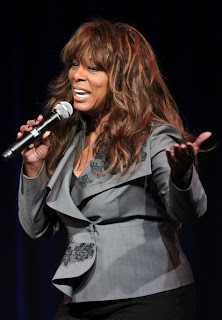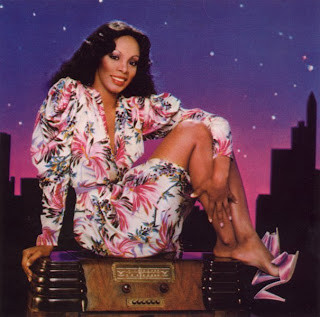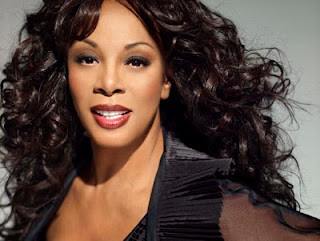“Last Dance” by Donna Summer is more than just a disco track; it’s an emotional journey, a cinematic moment, and a testament to Summer’s vocal prowess. For many, including myself, discovering Donna Summer was a pivotal moment in understanding the power and depth within pop music. Recently, while taking a break outdoors, listening to the extended version of “Last Dance” reminded me of its enduring magic and Donna Summer’s unparalleled artistry. Even through the limitations of a phone speaker, the sheer brilliance of her voice shone through, demanding to be heard.
My personal journey with Donna Summer’s music is somewhat unconventional. Growing up, my musical world was dominated by film scores and classical compositions. Pop and rock music were on the periphery until my teenage years. However, thanks to my sister’s diverse musical taste, Donna Summer’s voice and hits were a constant, if subliminal, presence in my early life. Yet, it wasn’t until later that I truly appreciated her artistry and the significance of songs like “Last Dance.”

Donna Summer in a promotional shot, showcasing her iconic disco era look and the captivating stage presence that defined her performances.
My initial encounter with Donna Summer was not through her records but through her role in the 1978 disco film Thank God It’s Friday. In this movie, Summer portrays Nicole Sims, an aspiring singer desperately seeking her big break at a bustling disco. The narrative revolves around her persistent attempts to convince the club’s DJ to let her perform. Despite repeated rejections, Nicole’s unwavering determination eventually leads to her pivotal moment. When the DJ finds himself needing to fill unexpected airtime, Nicole seizes the opportunity and takes the stage. The song she chooses to perform is, of course, “Last Dance.”
The movie scene, while admittedly predictable, is elevated by Donna Summer’s compelling portrayal of Nicole. She embodies a mix of vulnerability and ambition, a young woman with undeniable talent and the courage to seize a fleeting chance. This performance in Thank God It’s Friday not only launched “Last Dance” into the stratosphere but also cemented Donna Summer’s status as a multi-talented artist.
And then there’s the song itself – “Last Dance.” It’s undeniably a masterpiece. While disco music, in general, can be easily dismissed or even mocked for its perceived excesses and focus on rhythm over substance, “Last Dance” transcends these criticisms. Donna Summer’s contribution to the genre, and to music as a whole, is undeniable. “Last Dance” stands as a prime example of disco’s potential for genuine artistry.

Donna Summer in a scene from “Thank God It’s Friday,” portraying Nicole Sims, the aspiring singer who captivates the disco with her performance of “Last Dance.”
Initially, “Last Dance” might seem like a typical extended disco track, driven by a pulsating beat. However, beneath the rhythm lies a rich melody and a carefully constructed arrangement. The song’s genius lies in its deliberate pacing, particularly the slow, melancholic introduction. In this opening section, Donna Summer doesn’t just sing the lyrics; she inhabits them, conveying a sense of vulnerability and longing that is far deeper than simple seduction.
Last dance
Last dance for love
Yes, it’s my last chance
For romance tonightI need you by me
Beside me, to guide me
To hold me, to scold me
‘Cause when I’m bad I’m so, so bad….
Summer’s delivery transforms these lines from simple lyrics into a desperate plea. It’s not just about finding someone for the night; it’s about a yearning for connection, a last chance at romance as the evening draws to a close. There’s a palpable sense of urgency and vulnerability in her voice, hinting at past disappointments and the weight of unspoken emotions. This is not a confident come-on; it’s a heartfelt appeal.
Then, the beat drops, and “Last Dance” transitions into its iconic disco groove. The tempo shifts dramatically, and the song explodes into a vibrant dancefloor anthem.
So let’s dance the last dance
Let’s dance the last dance
Let’s dance this last dance tonight
The repeated lyrics, propelled by the driving beat, synthesizers, strings, and brass, create an irresistible invitation to the dance floor. This section embodies the energy and excitement of disco, a celebration of movement and rhythm. However, within this upbeat section, there’s a brief but crucial bridge, a “B section” that elevates the song to another level:
I can’t be sure
That you’re the one for me
But all that I ask
Is that you dance with me….
This short interlude is often omitted in radio edits, a disservice to the song’s true depth. In these few lines, Donna Summer reveals a deeper layer of emotion. It’s not just about a fleeting dance floor romance; it’s about a search for connection, for “the one,” even if that search is uncertain. The dance becomes a metaphor for this yearning, a temporary escape and a hopeful embrace of the unknown. The vulnerability in her voice during this section is particularly striking.
The song structure is further enhanced by a return to the slow introduction, mirroring the lyrical themes of closure and reflection. This repetition might symbolize a second, more intimate dance, the one hoped for after the initial connection on the dance floor. And as “Last Dance” builds towards its climax, Donna Summer unleashes an extraordinary high note around the 6:20 mark, a vocal feat that serves as the perfect, glorious culmination of the song’s emotional and musical journey.
Donna Summer possessed a truly miraculous voice, an instrument of incredible power and range, which she commanded with absolute mastery. Even years later, her live performances of “Last Dance” demonstrated her undiminished talent. Her rendition of “The Star-Spangled Banner” at a Red Sox game further showcased her versatility and vocal control, proving her artistry extended far beyond the disco genre.

A portrait of Donna Summer, capturing her beauty and the vocal power that made her a legend, forever associated with the magic of “Last Dance.”
Donna Summer’s passing is a profound loss to the music world. Her voice, her artistry, and her ability to infuse even the most danceable tracks with genuine emotion are deeply missed. “Last Dance” remains a timeless classic, a testament to her genius and a reminder of the emotional depth that can be found within disco music. It’s a song that continues to resonate, not just as a dance anthem, but as a poignant exploration of love, longing, and farewell.

